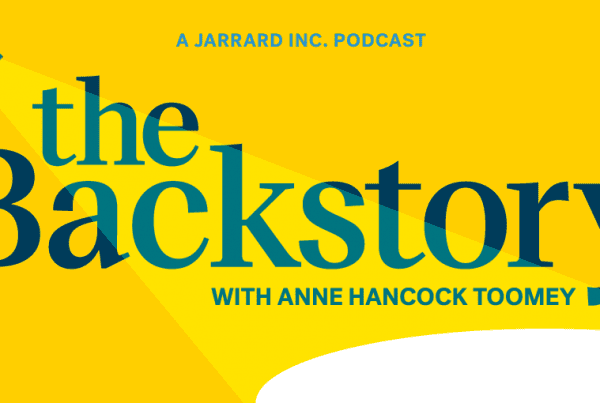It’s true: Some members of your clinical staff are reluctant to take the vaccine for COVID-19 they’re being offered.
What can you do about it? How do you respond when your caregivers – so influential to your patients — are hesitating to take what most healthcare authorities say is the very solution to protect our community health and lead us out of this pandemic mess?
Almost one-third of people living in households with someone working in healthcare are on the fence or unlikely to get the vaccine, per a new Jarrard Inc. national survey. The Wall Street Journal has also highlighted this issue, calling skeptical healthcare workers “an unexpected obstacle” to vaccine distribution. Meanwhile, the vast majority of Americans (79%) think hospital workers should be required to be vaccinated, according to our study.
Why the reluctance? Healthcare workers told us they’re worried most about potential side effects. But they’re also concerned they could catch the coronavirus from a vaccine or, simply, that the vaccines aren’t effective. They aren’t alone. Of the nearly half of Americans worried about COVID-19 vaccines, six in ten are concerned about side effects.
With the public overwhelmingly agreeing that the vaccine should be mandated for hospital workers and a notable proportion of healthcare workers skeptical themselves, the risk of tension between employee and employer and public is real. Will it matter when it comes to public perception of your organization or willingness for people to come in to receive care? Can public expectations be used to help encourage hesitant employees to get the vaccine?
Ideally, we can reduce the number of employees who opt out of vaccination through education and highlighting the positive outcomes. To get further, faster, consider these tactics for driving COVID-19 vaccine acceptance rates within your organization.
- Listen first. Before developing any additional strategies, check in with your caregivers to learn more about what’s preventing them from receiving a vaccine. Some employees may still not understand how the mRNA vaccine works. Or they may have concerns about side effects. Quick due diligence through a pulse poll or leader rounding will give you valuable insight to better inform your plans.
- Take another look at your process. While hesitancy is real, it’s also possible that your logistics are getting in the way of simple access. Is it hard for caregivers to register for the vaccine? Is it being offered in a convenient location? We spend so much time talking about access for patients, but in this instance, it’s important for our team as well. Make it easier.
- Create a safe space for employees to get more information. By facilitating dialogue, you can provide employees with facts about the vaccine and answer their questions. Engage trusted members of your medical staff to lend credible, clinical voices to the conversation.
- Celebrate caregivers who have opted in. As is the case with many organizational initiatives, your employees can be your best advocates. Highlight employees who have gotten vaccinated in internal communications or on social media. Sharing their stories and testimonials (including honest assessments of side effects, such as, “I felt lousy for a couple of days but I’m ok…”) can be influential for their peers.
- Consider when it’s time to move on. At some point, providers who aren’t requiring their staffs to get vaccinated might need to stop putting resources into cajoling a resistant staff and applying that energy to others in the community. There is risk in pushing those remaining holdouts to opt in – risk in using valuable time and resources, risk in damaged trust within your workforce. Each provider needs to consider if and when a refocusing of effort should take place. Even before this happens, prepare to explain why you aren’t requiring employees to get vaccinated against COVID-19 (assuming that’s the case). Be ready to tell a public – who wants to see hospitals require vaccination – why you’re letting people opt out.
The good news is public opinion on the COVID-19 vaccination is increasing, and more Americans are expressing their intention to get vaccinated once eligible. By listening to your caregivers and meeting them where they are with the information they need, you can be in a better position to empower them to make the best decisions for themselves, their families and their community.


